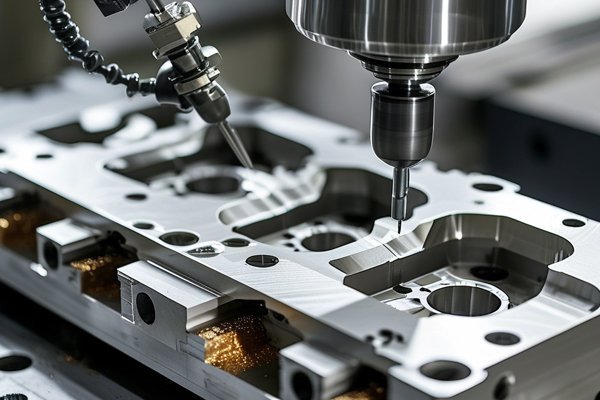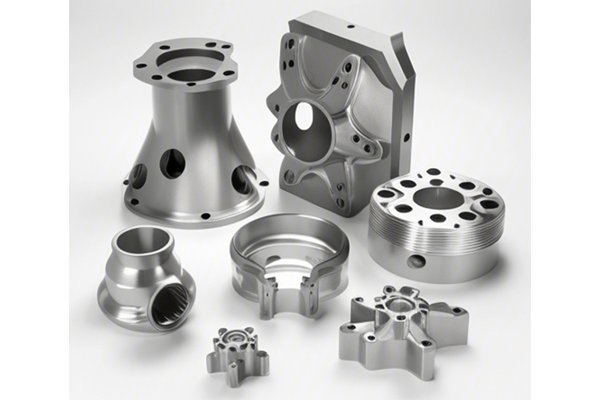Did you know that a staggering 80% of companies that suffer data breaches cite intellectual property as their most critical asset? In today’s fiercely competitive landscape, maintaining the confidentiality and integrity of intellectual property (IP) is paramount for businesses, especially in sectors that rely on advanced manufacturing technologies like CNC (Computer Numerical Control) machining. This high-stakes scenario raises a pivotal question: How can CNC machining services ensure the protection of their customers’ intellectual property rights?
Understanding Intellectual Property Rights in CNC Machining
Intellectual Property Rights (IPR) encompass a wide range of legal protections granted to creations of the mind, including inventions, designs, and brands. In the realm of CNC machining, IP often includes proprietary designs, blueprints, and manufacturing processes that a company may have developed over years. Protecting these assets is crucial, as unauthorized access or infringement can lead to significant financial losses and a tarnished reputation.
Various Types of Intellectual Property Relevant to CNC Machining:
—
The High Risk of IP Theft in CNC Machining
With the rise of globalization and the ease of digital communication, IP theft has become a significant threat in the machining industry. CNC machining services often handle sensitive designs and blueprints, making them prime targets for intellectual property theft. The consequences of such breaches can range from loss of competitive advantage and revenue to potential legal battles.
Notable Incidents of IP Theft in CNC Machining
In 2018, a major automotive manufacturer discovered that sensitive technical drawings had been stolen and leaked online, resulting in millions of dollars in losses. Smaller CNC shops are also not immune, as they may lack the resources to implement robust IP protection measures.
—
Strategies for Protecting Intellectual Property Rights in CNC Machining
To combat these risks effectively, CNC machining services can adopt a multi-layered approach to safeguard their customers’ intellectual property. Here are some actionable strategies to consider:
Before engaging in any projects with clients, implementing NDAs can be a powerful first step. These legal documents ensure that both parties understand their responsibilities concerning the confidentiality of any shared information, including designs, processes, and trade secrets.
One of the primary defenses against IP theft is restricting access to sensitive information. CNC machining services can implement stringent access controls, ensuring only authorized personnel can view or handle critical documents and designs.
Implementing DRM software can provide an additional layer of protection for digital files. It allows CNC machining services to control how digital assets are accessed and used.
Ensuring that all communication regarding sensitive IP occurs via secure channels is vital. Using encrypted emails and secure file-sharing platforms keeps data safe from potential breaches.

While much focus is placed on digital protection, physical security remains crucial. CNC machining facilities should employ various physical security measures:
Educating employees on the importance of intellectual property and security best practices can go a long way in protecting sensitive data.
Conducting regular audits helps organizations remain aware of their IP assets and identify any vulnerabilities in their protection strategies.
Work with legal professionals specializing in intellectual property law to ensure compliance and up-to-date protection measures.
Utilizing advanced tracking systems can ensure that any changes or accesses to sensitive data are logged and accessible should issues arise.
—
Navigating Intellectual Property Laws and Challenges
Understanding the complex landscape of IP laws is essential. CNC machining services must remain informed about local and international laws governing IP rights.
Common IP Challenges Faced in CNC Machining
—
In a world where intellectual property is a cornerstone of competitive advantage, CNC machining services cannot afford to overlook the importance of protecting their clients’ sensitive data. By employing a combination of legal safeguards, technological solutions, employee training, and physical security measures, these organizations can create a secure environment conducive to innovation.
As we’ve explored, the risk of IP theft is real, but the strategies outlined above provide a solid foundation for mitigating these risks. For CNC machining companies, prioritizing the protection of intellectual property rights is not merely a legal obligation; it is a critical investment that nurtures trust and fosters long-term relationships with clients.
In a rapidly evolving industry, the integrity of your processes and the protection of your IP can set you apart. For clients, knowing their proprietary designs and data are secure can be the deciding factor when choosing a machining partner. Thus, creating a robust framework for intellectual property protection is essential not only for compliance but as a strategic advantage in a competitive marketplace.
Reflecting on these insights can inspire other businesses in the CNC sector to establish comprehensive protection measures, and ultimately, safeguard their most valuable assets—their innovation and creativity. Never forget: protecting intellectual property is not just an option; it’s a necessity in modern CNC machining.






